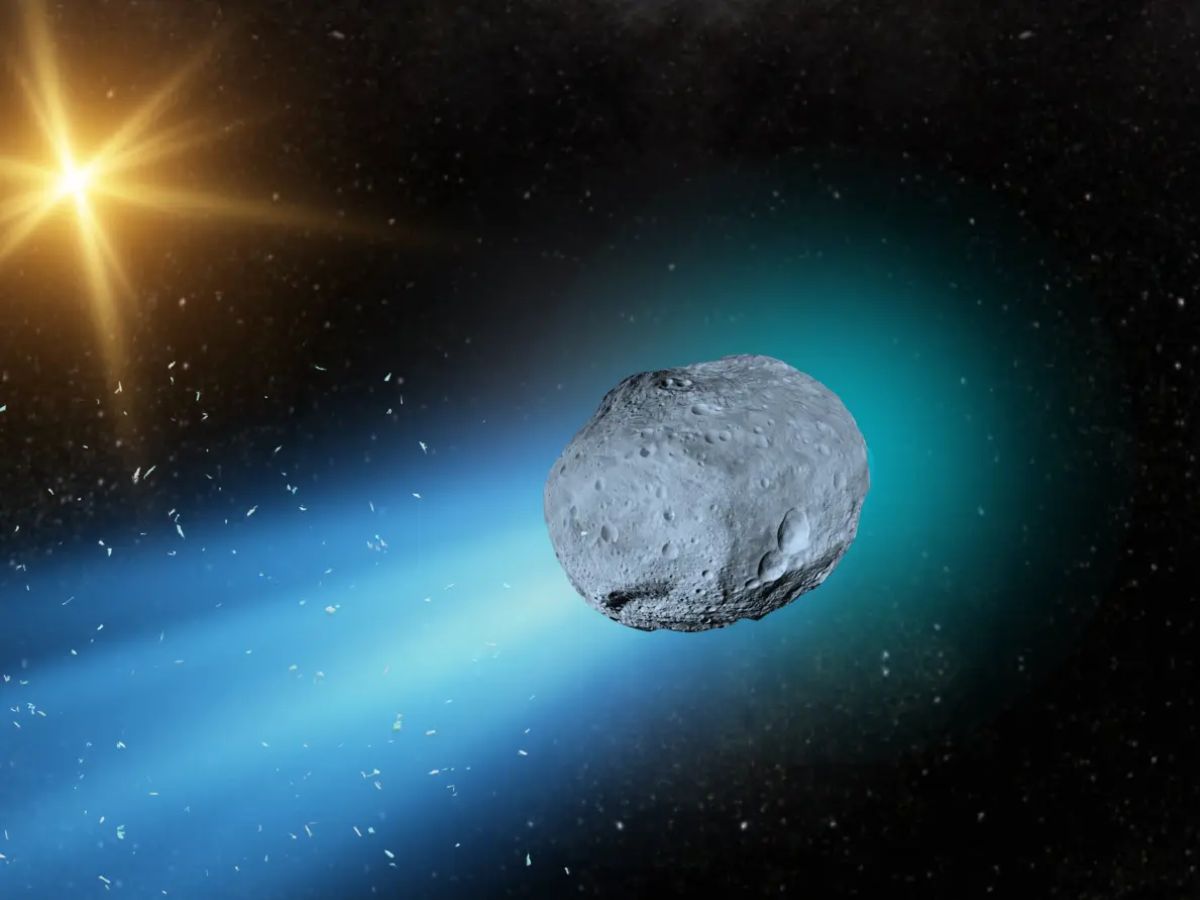Science
Comet 3I/ATLAS Displays Unusual Behavior Near the Sun

Comet 3I/ATLAS has exhibited several extraordinary behaviors as it approached the Sun, prompting astronomers to explore various theories to explain its unusual characteristics. Observations made by space-based telescopes have revealed rapid changes in brightness, unexpected tail formations, and peculiar movement patterns.
Rapid Brightening and Blue Appearance
In late October 2025, while nearing the Sun, comet 3I/ATLAS brightened significantly, becoming several magnitudes more luminous than typical comets observed in our solar system. Unlike most comets, which gradually brighten as they are heated by solar radiation, 3I/ATLAS transitioned to a distinctly blue hue faster than anticipated. This phenomenon is uncommon and led scientists to speculate about the presence of unique materials or unknown processes. The majority of these observations were made using advanced instruments from NASA’s STEREO-A and the European Space Agency’s SOHO satellites, as the comet was located behind the Sun from Earth’s perspective.
Strange Tail Changes: The Anti-Tail Phenomenon
Typically, a comet’s tail forms by pointing away from the Sun due to solar winds pushing dust and gas. However, astronomers studying 3I/ATLAS observed an unusual phenomenon referred to as an “anti-tail,” which emitted streams of dust and gas directed towards the Sun. First noted in September 2022, this unexpected orientation defied standard comet behavior and astonished researchers. As the comet approached closer to the Sun, its tail reverted to the expected direction, posing a challenge for scientists to understand the underlying geometry of light scattering off dust particles. The emergence of such a pronounced anti-tail is rare, adding to the intrigue surrounding this celestial visitor.
In addition to its striking visual characteristics, the movement of 3I/ATLAS has also raised questions among experts. The Jet Propulsion Laboratory reported that the comet demonstrated signs of non-gravitational acceleration during its perihelion, the point of closest approach to the Sun. While typical comets may exhibit slight speed variations due to gas jets, 3I/ATLAS was observed to shift more drastically, even moving sideways. Some scientists, including Avi Loeb, an astrophysicist at Harvard University, have suggested that this behavior could indicate the possibility of a technological mechanism at play, similar to an engine causing acceleration. This theory, while controversial, has sparked interest and discussions within the scientific community.
The bright blue color, reversed anti-tail, and erratic movement of comet 3I/ATLAS have positioned it as one of the most peculiar interstellar visitors to date. Ongoing investigations aim to uncover the reasons behind these anomalies and what they may reveal about celestial objects entering our solar system from beyond.
The information presented is based on current astronomical observations and publicly available research. Some findings are still under review, and interpretations may evolve as new data emerges from ongoing space studies.
-

 World5 months ago
World5 months agoSBI Announces QIP Floor Price at ₹811.05 Per Share
-

 Lifestyle5 months ago
Lifestyle5 months agoCept Unveils ₹3.1 Crore Urban Mobility Plan for Sustainable Growth
-

 Science4 months ago
Science4 months agoNew Blood Group Discovered in South Indian Woman at Rotary Centre
-

 World5 months ago
World5 months agoTorrential Rains Cause Flash Flooding in New York and New Jersey
-

 Top Stories5 months ago
Top Stories5 months agoKonkani Cultural Organisation to Host Pearl Jubilee in Abu Dhabi
-

 Sports4 months ago
Sports4 months agoBroad Advocates for Bowling Change Ahead of Final Test Against India
-

 Science5 months ago
Science5 months agoNothing Headphone 1 Review: A Bold Contender in Audio Design
-

 Top Stories5 months ago
Top Stories5 months agoAir India Crash Investigation Highlights Boeing Fuel Switch Concerns
-

 Business5 months ago
Business5 months agoIndian Stock Market Rebounds: Sensex and Nifty Rise After Four-Day Decline
-

 Sports4 months ago
Sports4 months agoCristian Totti Retires at 19: Pressure of Fame Takes Toll
-

 Politics5 months ago
Politics5 months agoAbandoned Doberman Finds New Home After Journey to Prague
-

 Top Stories5 months ago
Top Stories5 months agoPatna Bank Manager Abhishek Varun Found Dead in Well









